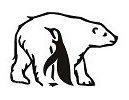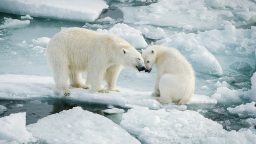Brief justification
In order to develop effective measures for the protection and conservation of animals in the Arctic and Antarctica, regular studies of the animals themselves and their habitat are necessary. Manned aircraft have long been used to study them, and now unmanned aerial vehicles (UAVs). But so far, little is known about the number and condition of the animals. Effective monitoring in harsh polar conditions requires new technical means and methods for collecting UAV-based materials, as well as modern computer methods for processing them.
Goal: Monitoring of the state of nature and multi-species accounting of polar animals.
Brief description of the project
To study animals and their habitat, several UAVs based on an icebreaker or an ice-class vessel are being photographed from aboard at the same time. The drones are equipped with cameras in various areas of the optical spectrum, including the infrared and ultraviolet ranges, as well as navigation systems, altimeters and other equipment. The icebreaker provides forward movement, and the UAVs are shooting tacks mainly in the direction perpendicular to the movement of the icebreaker.

After preliminary on-board processing and compression, the collected materials from the UAV are promptly transferred to an express processing center on an icebreaker or shore to assess the quality of the materials and further flight planning. The information is then transmitted to the coastal data processing and analysis center. Then the sample data is extrapolated and the number of animals of various species is estimated.
Aircraft accounting works
Collection of materials
Determining the area of work and choosing the time of aerial photography
The initial stage includes determining the area and timing of aerial filming. To do this, it is necessary to take into account the size of the territory, the type of terrain and the density of distribution of animals. Choosing the optimal time for shooting depends on the life cycle of the animals. UAV photography should be performed during a period of animal activity when it is possible to perform the most complete accounting of them.
UAVs, routes and altitude of aerial photography
The choice of drones depends on the job specification. Small UAVs are used to capture small areas in detail, while larger aircraft are used to cover large areas. Flight routes are laid out in such a way as to obtain the most complete and uniform coverage of the work area without large gaps. The height of the drone’s flight should provide both sufficient image resolution to detect animals and wide coverage of the area for representative sampling. This allows us to obtain more accurate flight accounting results as a result.
Methods of aerial photography of animals
Methods of both direct detection of animals and traces of their vital activity are used. In addition to conventional digital photography, infrared, ultraviolet and other types of photography are used in the visible region of the spectrum. The use of thermal imagers makes it possible to identify animals by their thermal trail even in conditions of low visibility, and the use of ultraviolet light makes it possible to detect camouflaged individuals.
Aerial photography equipment
When shooting from UAVs, special requirements are imposed on the equipment: cameras must have high resolution, wide viewing angle and be stable under vibration, withstand harsh operating conditions. The angles of the camera equipment must be metrologically calibrated. In addition to special equipment for controlling UAVs and aerial photography equipment, a navigation system, an altimeter, and aircraft position sensors are needed.
Processing of flight data
Decryption of aerial photographs
At the stage of decoding images from UAVs, specialists analyze the obtained materials, classifying terrain types and identifying animals on ice, land or in water. Both manual methods and computer methods using machine vision and neural networks are used to detect and recognize animals.
Counting animals and correcting under-counting
The number of animals in the images is calculated by direct counting of individuals in the images in manual or automatic mode. At the same time, the underestimation at the edges of the images is corrected using statistical models. The degree of underestimation is also assessed due to the complexity of the terrain and the peculiarities of animal behavior.
Extrapolation of aerial survey data
At the next stage, the accounting data is extrapolated to the entire surveyed area and estimates of the number of animals of different species are made. The results of the work are interpreted by biologists and geographers together with specialists from other specialties. The results of the work are then used to assess the state of polar ecosystems, protect them, and develop biodiversity conservation strategies.
Preparation for work
The implementation of the entire project requires thorough scientific and technical training in biological, environmental, geographical and other areas, as well as serious mathematical, organizational and technical support for the work. An integrated approach dictates combining the efforts of professionals of various profiles — from biologists to technical specialists.
Among the priority areas are the following:
· “census” of animal species living in the polar regions and characteristics of their habitat;
· development and improvement of specialized UAVs, aerial photography equipment and aerial photography methods;
· improvement and automation of methods for collecting, processing materials and counting animals;
· improvement of extrapolation methods and algorithms for estimating the number of animals;
· Improving the interpretation of animal research results in polar regions.
By Nikolay Kuznetsov, n-kuz@yandex.ru January 2023


